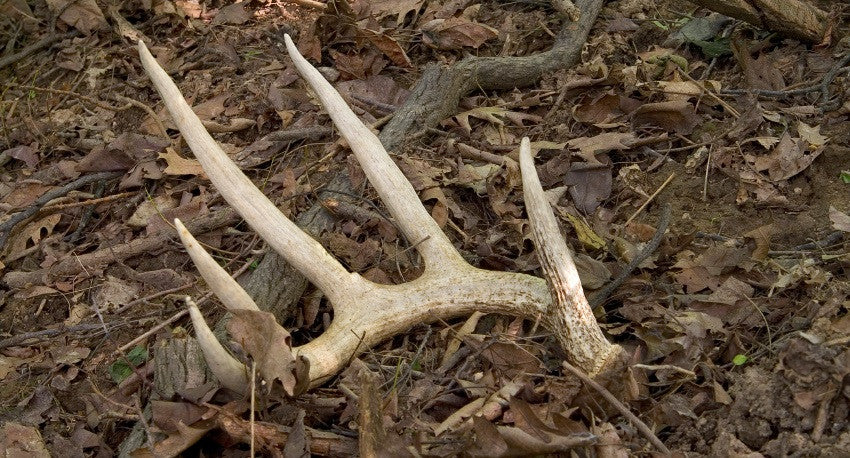
Hunters have sought shed antlers on the forest floor for as long as they’ve hunted deer. In recent years, antler shed hunting has become more popular than ever. However, while shed hunting is a rewarding activity, it is often difficult at the outset. Fortunately, dedicated NOMADs usually get better at finding antlers as they accumulate more experience. To enjoy success, you’ll want to hone your skills, cloak yourself in the right type of gear and maybe even enlist the help of your dogs. Whether you’re just getting started or have been at it for a while, we hope these antler shed hunting tips will help you improve your take.
Advantages and Benefits of Shed Hunting

There are many reasons to prowl your favorite hunting grounds looking for shed antlers (aside from the joy of getting out of the house and into the woods). For example, shed-hunting will help you familiarize yourself with the bucks who live in the area. This will help inform many of your decisions when fall comes around and it is time to pick the rifle back up. On the other hand, if you are already familiar with the bucks in the area, you can get a good idea about which ones survived the past hunting season.
Shed hunting also provides additional insights to your local deer’s behavior, specifically about the ways in which they use the property and move between various resource patches. Deer don’t travel out of their way when shedding their antlers, so you can bet that any location harboring antlers is on the deer’s regular route.
Shed Hunting Dog Training

Most hunting dog breeds can be trained to locate shed antlers, and they typically love the chance to get out into the field for just about any reason. Retrievers generally have the best skill set for the job, but hounds and terriers can also learn to sniff out antlers.
Teaching them to find antlers is pretty easy, and you should approach it like you teach them most other hunting skills. Start out with a small piece of antler. Show it to your dog, get him excited about it and then chuck it. Give him the retrieve command if he isn’t already flying after it, and praise him when he returns with it. Some trainers like to encourage their dogs to use their eyes as well as their noses, so they place the antlers in highly visible locations or even place small pieces of real antler near large paper or cardboard cut-outs in the shape of antlers.
Shed Hunting Gear and Apparel
You’ll want a good pair of hiking boots anytime you head out into the field. They should provide great support and remain comfortable even after you’ve spent hours walking in them. It’s always a good idea to purchase and use waterproof hiking boots, but it is especially important for shed hunting, which occurs during the early spring, when the snow is melting, the rains are starting and the ground often turns to muck.

You’ll also want a good pair of binoculars to help you search with your eyes instead of your feet. While it isn’t always helpful to glass every type of habitat, you can certainly find shed antlers from a distance in open fields covered in short grass or clear cuts between forested patches. An 8x40 setup should work well in most circumstances, but feel free to experiment with different magnification levels to suit your needs and the hunting grounds you frequent.
And don’t forget the proper hunting apparel. You’ll want to wear the same type of clothing you’d wear while hunting deer, although you may need to alter it slightly to account for warmer temperatures. Gear made with high performance materials will help you stay cool and comfortable for a long day on the hunt.
NOMADS Leave No Stone Unturned
NOMADs are not ordinary hunters; they aren’t engaging in a hobby. NOMADs hunt to exercise their ancestral instincts and honor the hunter lurking within. This often means working, studying and scouting harder, so that you’ll be better equipped to find and best your quarry.
Be sure to get every advantage you can get. Suit up in your favorite NOMAD Outdoor gear, grab your dog and get to know the local habitat, the deer and yourself.


















